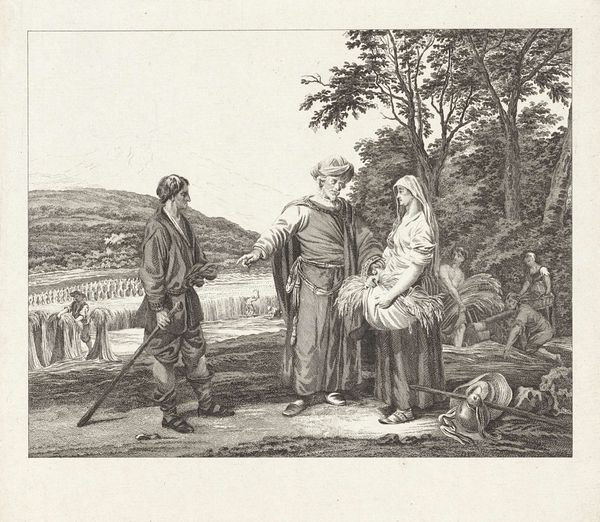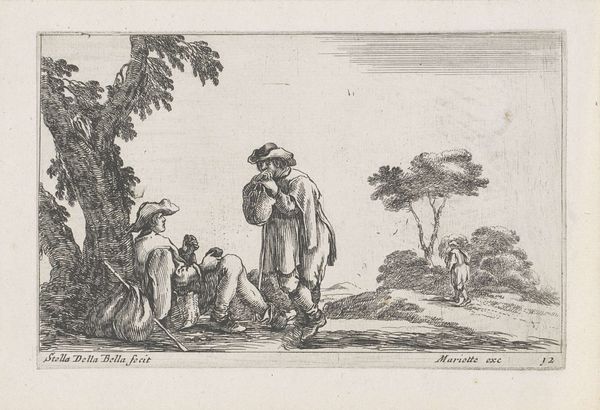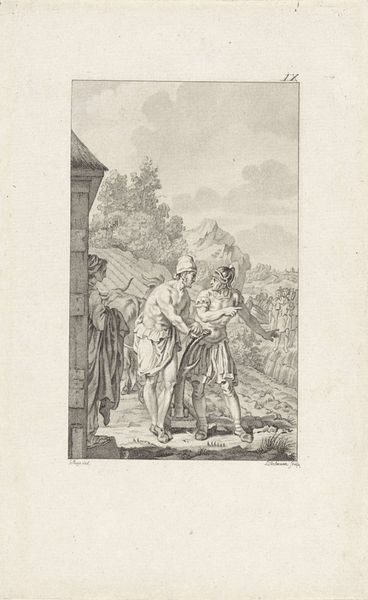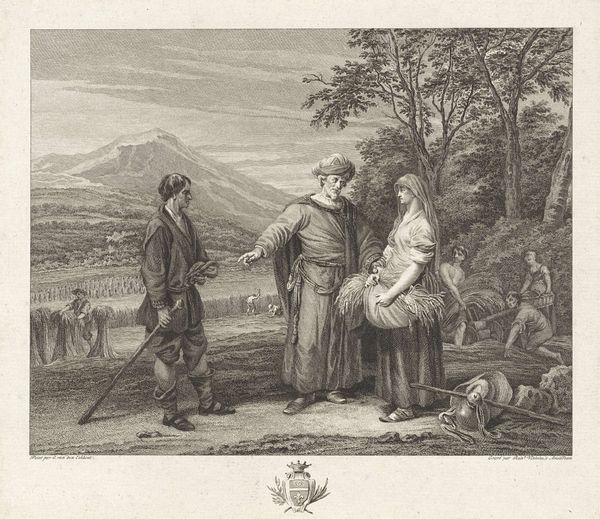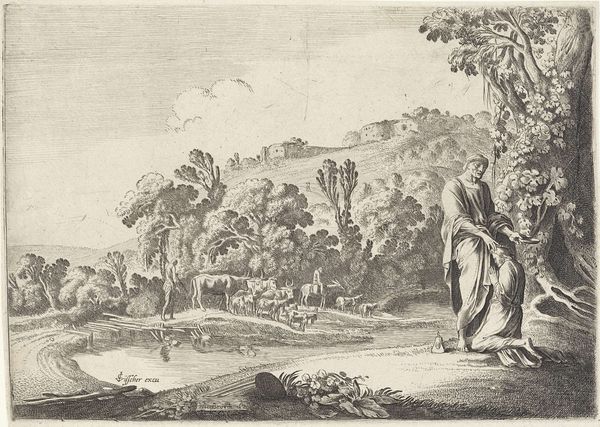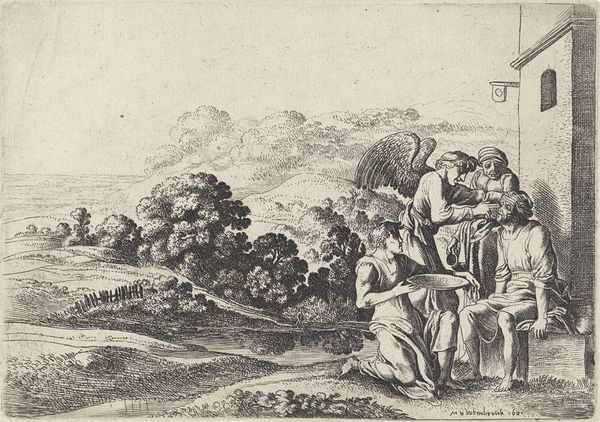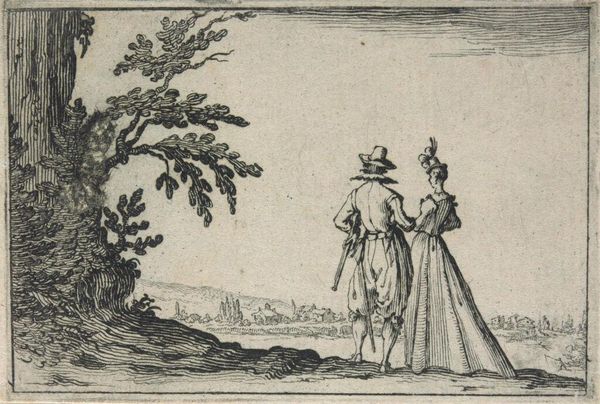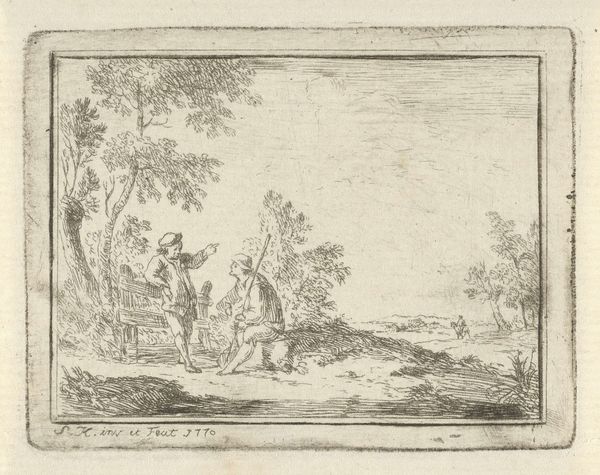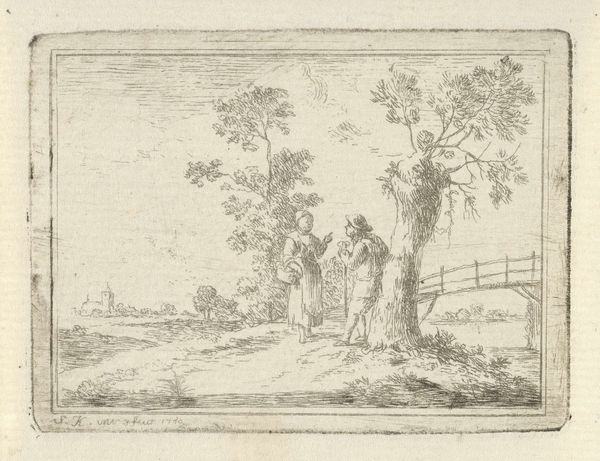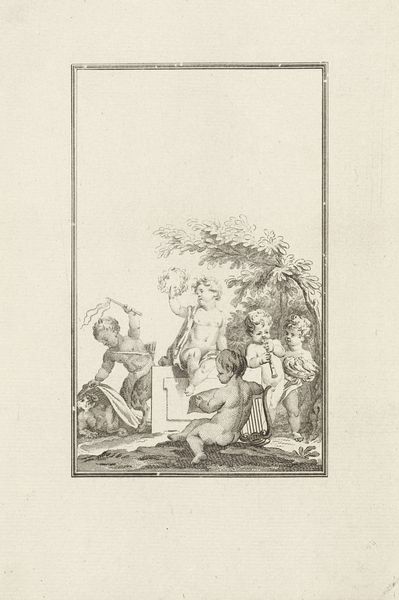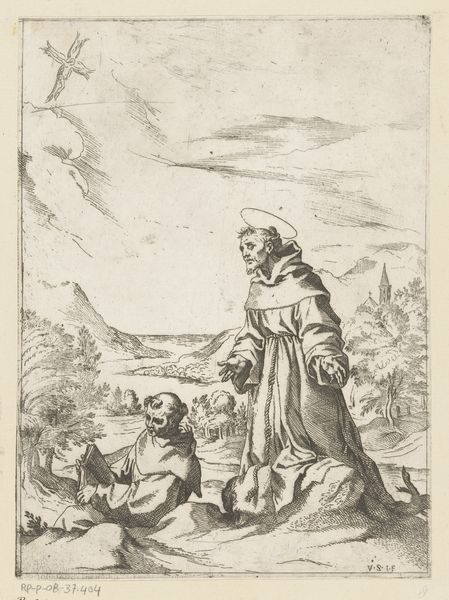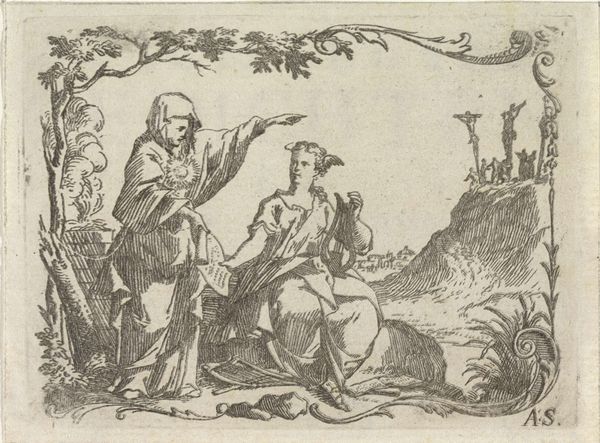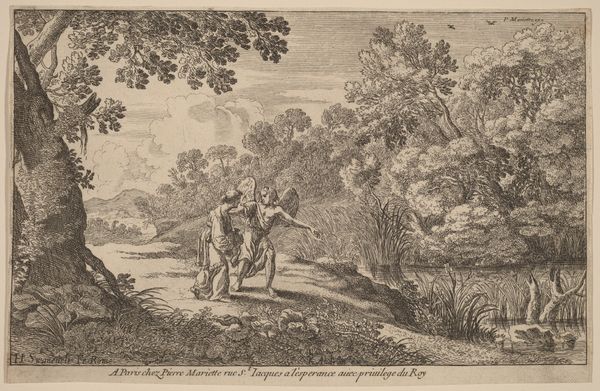
drawing, print, etching
#
drawing
#
light pencil work
#
quirky sketch
#
baroque
# print
#
etching
#
pencil sketch
#
sketch book
#
landscape
#
figuration
#
personal sketchbook
#
sketchwork
#
pen-ink sketch
#
sketchbook drawing
#
pencil work
#
genre-painting
#
sketchbook art
Dimensions: height 88 mm, width 139 mm
Copyright: Rijks Museum: Open Domain
Editor: This print, "Boer en boerin in een landschap," by Stefano della Bella, created sometime between 1620 and 1664, uses etching to depict a pastoral scene. I'm immediately drawn to the seeming simplicity of the line work and the ordinary scene, even though it's executed with evident skill. What do you find particularly striking about this work? Curator: I see here a fascinating commentary on the means of artistic production. Etching, as a printmaking technique, democratized the image. While Della Bella's skill is evident, the medium itself suggests a shift towards wider accessibility. We should be asking, how does the material – the copper plate, the acid, the paper – inform our understanding of the subject: not romantic ideals, but rather a scene grounded in labor? Editor: That's interesting, because the scene seems so... everyday. Just a couple in a landscape. Curator: Precisely! Consider the labour that makes such a scene possible, and equally, the labor to reproduce this very scene through printmaking. Look at the detailed textures achieved through etching. Doesn't this meticulous rendering of, say, the woman's dress, reflect a concern for materiality and craft? Furthermore, we need to consider consumption. Prints were objects sold, traded, and displayed. Who was buying them, and what social value did they hold? Editor: So, you're saying it's less about the idyllic moment and more about the broader context of its making and how it circulated in society? Curator: Exactly! And how that circulation affects meaning. How does viewing such a mundane scene become elevated by being an artistic commodity? Is it poking fun at traditional landscape subject matter? We should resist taking the image simply at face value. The point is not the couple; it's what is made from it, what social lives does it enter. Editor: That completely changes how I see it. It's like considering not just what’s depicted, but all the steps to its existence and how those steps create layers of meaning. Curator: Yes, it's about tracing the social life of this object and thinking of the artist in conversation with society and his or her materials.
Comments
No comments
Be the first to comment and join the conversation on the ultimate creative platform.
